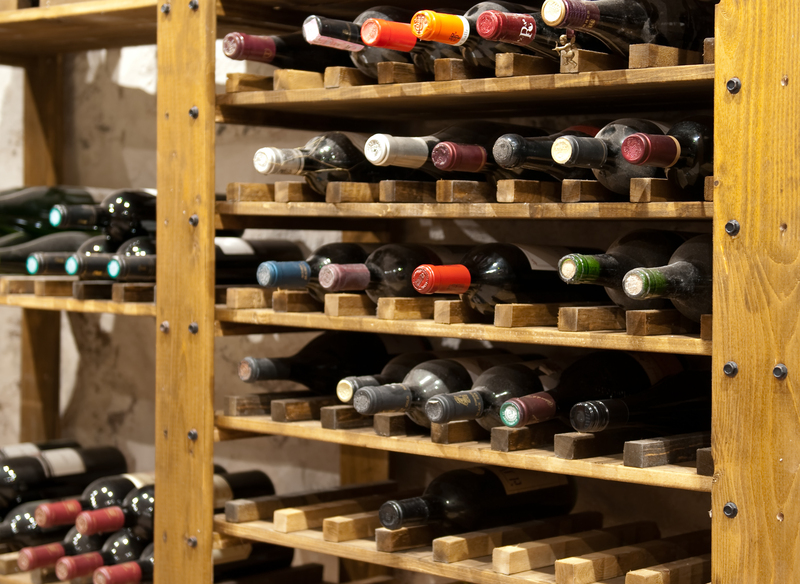The Real Risks of Moving a Piano Yourself and How to Avoid Disaster
When it comes to relocating heavy, valuable, and fragile items in your home, few objects are as daunting as a piano. Although moving a piano yourself may seem like a cost-saving idea, it comes loaded with significant hazards and pitfalls. In this comprehensive guide, we delve into the true dangers of relocating your own piano and how to steer clear of preventable disasters. If you value your instrument--and your own safety--you'll want to read on.
Understanding the Complexity: Why Moving a Piano Is Unlike Moving Furniture
Pianos are more than just large, heavy furniture pieces. They are intricate musical instruments with thousands of moving parts, sensitive strings, and delicate finishes. Whether it's an upright or a grand piano, the unique construction and substantial weight (typically between 300 and 1,200 pounds) pose a set of moving challenges far beyond that of ordinary household items.
Key Differences Between Pianos and Standard Furniture
- Weight Distribution: Pianos are often top- or side-heavy, making them unstable and difficult to maneuver.
- Delicate Components: Internal mechanisms are susceptible to damage from improper handling or vibration.
- Awkward Size: Grand pianos can span up to 7 feet, while uprights are tall and narrow, increasing the risk of tipping.
- Fragile Surfaces: Scratches or dents can diminish aesthetic and resale value.
- Environmental Sensitivity: Temperature and humidity changes during the move can affect tuning and wood quality.

The Hidden Dangers: Real Risks of DIY Piano Moving
Attempting to relocate a piano on your own involves a set of serious dangers. Below, we'll outline what can go wrong--and often does--when you forgo professional piano movers in favor of a DIY approach.
1. Risk of Severe Personal Injury
Muscle strains, back injuries, broken bones, and crushed fingers and toes are common among inexperienced movers. The sheer weight and awkwardness of a piano mean that even a small miscalculation in handling can lead to serious, sometimes permanent physical harm.
2. Major Property Damage
Alongside the threat to your own body, your home itself is at stake. Inefficient moving can cause:
- Dents and scratches on floors, walls, and door frames
- Broken staircases or floorboards from the immense weight
- Damaged banisters, corners, and thresholds
3. Irreparable Instrument Harm
Pianos are precision instruments. Improper movement can disrupt their mechanisms, unseat keys, damage strings, and even crack soundboards or frames. Post-move, tuning costs can skyrocket, or you may end up needing expensive repairs--or a new piano altogether.
4. Legal and Liability Risks
If friends or helpers get hurt, you could face costly legal or insurance consequences. Moreover, some insurance policies may not cover piano damage incurred during a self-move.
Common Scenarios: How DIY Piano Moves Go Wrong
To underscore the real hazards, consider these all-too-common disasters:
- Tipping Over: Upright pianos are especially prone to falling, risking damage to both the instrument and anyone in the way.
- Getting Stuck: Pianos often become wedged on staircases or in doorways, causing panic and potential structural damage.
- MacGyver Mishaps: Creative but inadequate substitutes for professional equipment result in catastrophe--think pianos sliding off boards or collapsing dollies.
Critical Mistakes to Avoid When Moving a Piano Yourself
If you're still considering a DIY relocation, knowing the most common mistakes can help you avoid the worst. Here's what can transform a straightforward move into a nightmare:
- Underestimating the weight and awkwardness -- Not recruiting enough helpers, or biting off more than you can chew, sets the stage for disaster.
- Lack of proper planning -- Failing to measure doorways, stairs, or turning radii ahead of time can halt progress halfway and lead to emergency improvisation.
- No specialized equipment -- Trying to move a piano without the correct dollies, straps, skid boards, or padding is a recipe for disaster.
- Poor communication -- Moving such a large item requires teamwork and clear instructions; lack of coordination can cause collisions, falls, or pinched hands.
- Ignoring safety procedures -- Not wearing protective gloves or footwear, or ignoring lifting techniques, all amplify risk.
Essential Equipment and Tools for DIY Piano Moving
If you absolutely must move a piano yourself, investing in the right gear is crucial. Here's what is non-negotiable for safety and instrument preservation:
- Piano dollies and skids designed for the specific type of piano
- Heavy-duty moving straps for stability
- Protective blankets and padding to wrap the instrument thoroughly
- Locking gloves for grip and hand protection
- Moving boards for stair navigation
- Sturdy ramps for vehicle loading and unloading
- Furniture sliders for moving over floors safely
Never attempt to move a piano up or down a staircase without the correct equipment!
How to Safely Navigate Common Obstacles
Piano relocation rarely involves traversing empty, open spaces. Instead, you'll face tight corners, stairs, doorways, and more. Below are expert tips to handle these challenges:
Staircases
- Use a piano skid board and securely strap the piano in place
- Place one or two strong helpers above and below the instrument
- Shift weight gradually, taking no more than one stair at a time
- Never rush; maintain control and take frequent breaks
Doorways and Corners
- Remove doors from hinges, if possible, for extra clearance
- Pad doorframes and corners to prevent scuffing or impact
- Measure both the piano and passageways twice before proceeding
- Angle the piano carefully; avoid forcing it through tight spots
The Benefits of Hiring Professional Piano Movers
After examining the real risks of moving a piano yourself, it's clear why most experts recommend hiring professionals. Here's how a professional piano moving service makes all the difference:
- Specialized Training: Professional piano movers understand the unique demands of each type and model.
- Proper Equipment: Movers come prepared with every tool and safety device needed for both upright and grand pianos.
- Insurance Coverage: Most companies insure your piano and property, offering peace of mind in case of accidental damage.
- Efficient and Safe Processes: A seasoned team can move and load your piano with minimal risk and disruption.
- Piano-Centric Knowledge: Professionals can properly disassemble, pad, and reassemble instruments, preserving their playability and appearance.
Expert Advice: When to Attempt DIY and When to Call the Experts
While small digital keyboards or lightweight spinets might be manageable for a strong group, any acoustic piano move--especially those involving stairs, tight spaces, or long distances--should be left to the experts. If you:
- Are moving an upright or grand piano
- Face flights of stairs, uneven terrain, or narrow passageways
- Lack proper moving equipment and training
- Feel uncertain about any portion of the move
--the wisest choice is to hire reputable professional movers.
Remember: Your piano is not only a costly investment but often a sentimental heirloom. One wrong move can destroy its value forever.
How to Find a Reliable Piano Moving Company
To reduce the risk of disaster, choose your piano moving company with care:
- Check credentials: Look for licensing, insurance, and membership in organizations like the Piano Movers Association.
- Read reviews: Search for customer experiences and testimonials related to piano moving, not just general household moves.
- Get multiple quotes: Don't just choose the cheapest option; weigh expertise and reputation as well.
- Ask about process and equipment: Inquire about their specific procedures for moving your piano type and model.

Piano Moving Safety Checklist
- Measure all spaces and plan your route in advance
- Gather all necessary tools and safety equipment
- Recruit adequate, able-bodied help
- Pad and wrap the piano thoroughly
- Clear obstacles from the path of movement
- Communicate clearly with your team at all times
- Use slow, controlled movements--never rush
- Stop immediately if you feel unsafe or encounter unexpected resistance
Conclusion: Don't Let a Piano Move Become a Disaster
Ultimately, the real risks of moving a piano yourself far outweigh any perceived savings. From personal injury and property damage to the heartbreak of ruining your beloved instrument, the consequences of DIY mishaps can last a lifetime.
If you must attempt a piano move without professionals, respect the scope of the task, never cut corners on equipment, and be willing to call for expert help if you encounter difficulties.
For most piano owners, the peace of mind, safety, and cost savings found in professional piano moving services is well worth the investment. Proper care and respect for your instrument will ensure it continues to bring music--not regret--to your home for years to come.



